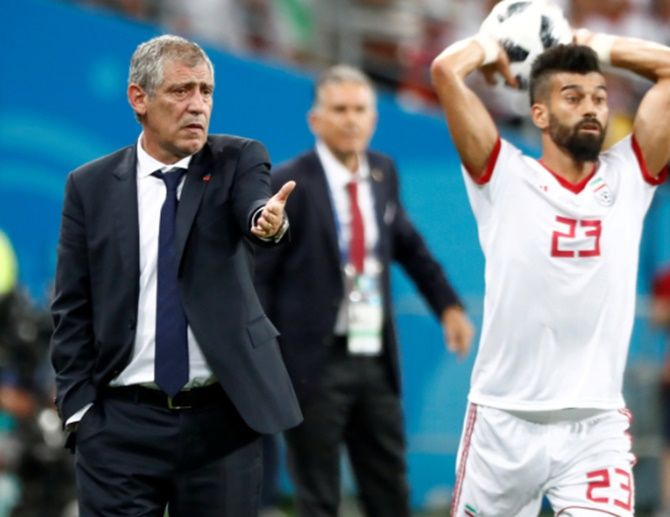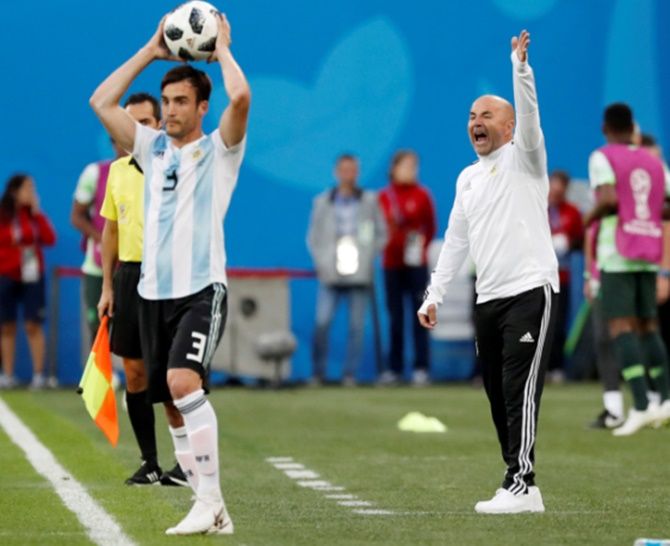'It's important for every team to have players who can throw long'
'It's like a corner or any other set piece, or passing -- it has to be precise'

The sight of players regularly hurling the ball into the box from the sideline in Russia is no coincidence as more and more teams are realising the potential of the long throw-in to create havoc, and ultimately goals, at this World Cup.
Sweden's third goal in their Group F win over Mexico was a perfect example, as winger Viktor Claesson launched the ball into the Mexican penalty area, striker Isaac Kiese-Thelin flicked it on and Mexican defender Edson Alvarez turned it into his own net to make it 3-0.
Danish specialist coach Thomas Groennemark is in no way surprised that the throw-in is being embraced as an offensive weapon in this way -- he has spent more than a decade teaching players from all over the world how to use it more effectively.
"It's important for every team to have players who can throw long, especially for the left and right backs," Groennemark told Reuters in a telephone interview, adding that every team had a player who could learn to do so.
"It is only technical training - you don't have to gain ten kilos in the weight room. There's a lot of different players who can throw long, from the short, explosive type like Roberto Carlos to tall players, to normal players with flexible arms."
The former athlete and bobsledder went to his local library in 2004 to read up on the mechanics of the long throw-in, and when he didn't find anything on the shelves, he decided to make his own program over the next six months.
"It was adopted by Danish Superliga club Viborg, and they scored a lot of goals from throw-ins and had the best season in their history," he says proudly.
This past season the 42-year-old has worked with FC Midtjylland, who scored 10 of their 80 goals from throw-ins en route to being crowned Danish champions, and he is also working with an unnamed English club.
The Dane, who wrote his name into the Guinness Book of Records in 2010 by hurling a throw-in a whopping 51.33 metres, or approximately half the length of a soccer field, laments what he calls the "imprecision" of many of the throw-ins in Russia.

"It's like a corner or any other set piece, or passing -- it has to be precise. If it's five metres too long or three metres too short, it's not good enough," he says.
"Problem number two is that a lot of the throw-ins at the World Cup are too high, making it easy for them to defend against or for the goalkeeper to catch them. Working with players and clubs, I work on a long, hard, flat throw-in."
For Groennemark, it's not enough to just hoist the ball into the penalty area and hope for the best.
"There has to be a thought behind it. It's exactly like a corner -- you have to think three or four steps forward, how the opponent will react. There are too many low-quality throw-ins in the World Cup."
Groennemark said that it is an essential skill for full backs to master due to the frequency of throw-ins in games.
"There are between 30 and 50 throw-ins per match between the two teams, and if the full backs do it badly you will lose the ball, as we have seen at this World Cup. There are a lot of teams taking throw-ins in their own half, and they are losing the ball," he says.
Perhaps the most eye-catching effort at this World Cup has been Iran's Milad Mohammadi's aborted effort against Spain, a forward-somersault effort over the ball that he quickly abandoned without releasing the ball.
"It's not just the long throw-ins that lead to goals that need to be good - it's important to make good throw-ins all over the pitch," says Groennemark.














 © 2025
© 2025